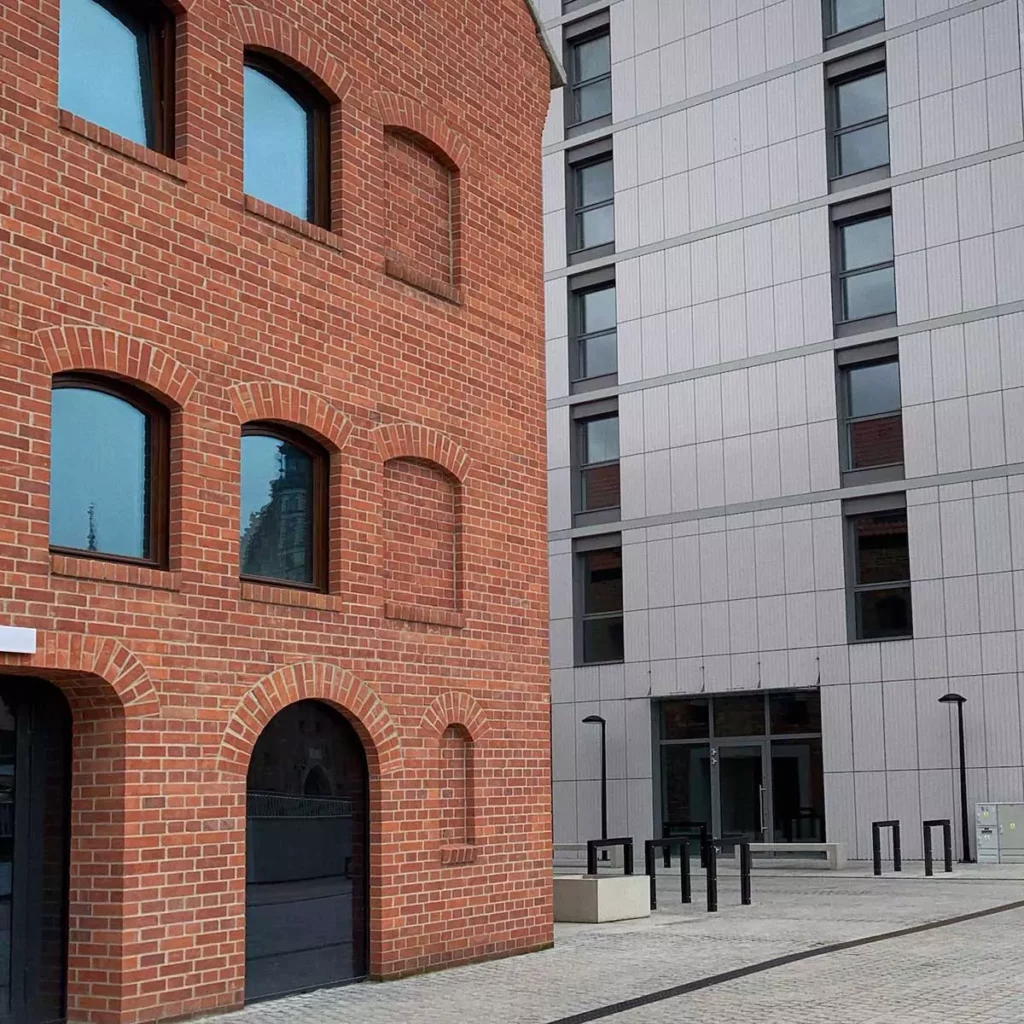Brickwork has proven itself to be a visually appealing and structurally sound building material for residential and commercial construction projects. However, when deciding how to use brick for construction, it is necessary to understand your two key options: a solid brick wall and a brick veneer wall. What are the key differences between these two brick types, and what is best for your construction project?
What is Brick Veneer?
A brick veneer wall system uses a timber or steel frame as the internal structure with a brick cladding layer that acts as the skin of the building. The assumption is that brick veneer is composed of thin pieces of brick. A brick veneer wall will look almost identical to a solid brick wall. However, unlike a solid brick wall, the veneer does not provide structural support. All support comes from the steel or wooden frame. If the veneer was to be removed, it would not disrupt the structural integrity of the building.
The Pros of a Brick Veneer Wall
The pros of building with a veneer are:
- Affordability: Veneer is generally less costly than a solid brick wall.
- Insulation: The cavity between the frame and veneer makes adding insulation easy.
- Installation: Veneer can be installed at any point after construction is complete. It is also quicker to install than solid brick.
- Easy alterations: Should you wish to make any alterations, brick veneer makes it easy renovate and move internal walls.
The Cons of a Brick Veneer Wall
The cons of building with a veneer are:
- Single-layer design: The one layer of brick means it is not as strong or durable as a solid brick wall.
- Water damage: When not installed correctly, a veneer wall can potentially cause water issues.
What is Solid Brick?
Solid brick or double brick structures are typically built using two layers of brick. They provide the structural support for a building. An air gap or cavity usually separates the internal and external brick walls for insulation and thermal efficiency purposes. You choose to render the outer brick layer or opt for face brick for a more aesthetically pleasing look.
The Pros of a Solid Brick Wall
The pros of building with solid brick are:
- Durable: Double brick provides a durable, stable structure that requires little maintenance over time.
- Sound insulation: Less noise can penetrate the building due to the thickness of the bricks.
- Resistance: Double brick offers better resistance against natural disasters, storms and fires.
- Thermal conductivity: The solid brick construction can keep a building cool during summer and warm during winter.
The Cons of a Solid Brick Wall
The cons of building with solid brick are:
- High cost: A double brick construction technique can be more expensive compared to brick veneer.
- Completion times: A double brick building can take significantly longer to compared to other construction methods.
- Potential termites: If you choose to use a timber frame, you’re at a higher risk of a termite attack.
What Should You Choose: A Brick Veneer or Double Brick Wall?
The best construction method is completely dependent on your project goals, budget and timelines. If you’re looking to build a solid structure that is durable against extreme weather events, then a double brick construction will work for you. If your goal is to minimise construction times then brick veneer is the best option. Our team at Solutions Built can help you determine which is best for your construction project.
Get in Touch With the Solutions Built Team
Building with the highest quality masonry products and using experienced bricklayers will ensure the longevity of your project. Please get in touch with Solutions Built to discuss your construction needs, whether they are building a solid brick building, a brick veneer wall, or using one of our other construction methods like Hebel. You can contact us via email or phone.
